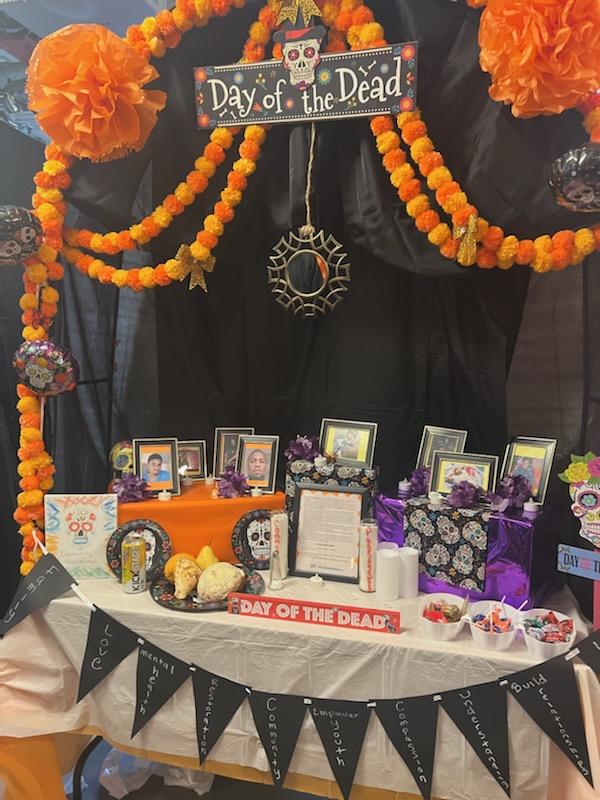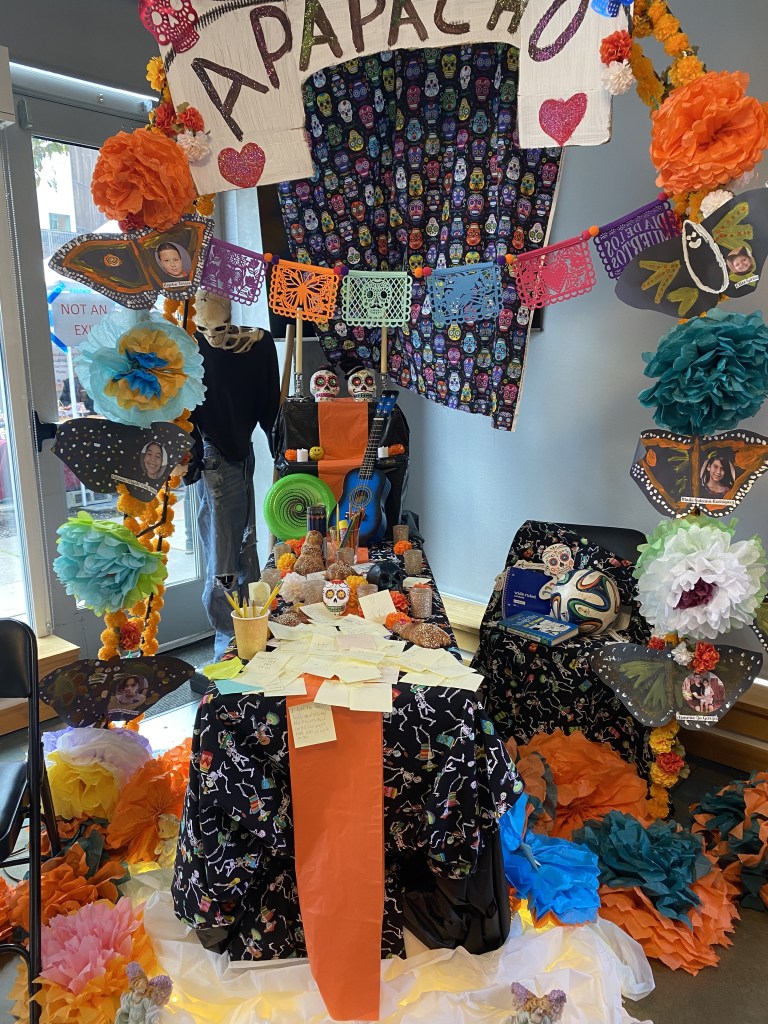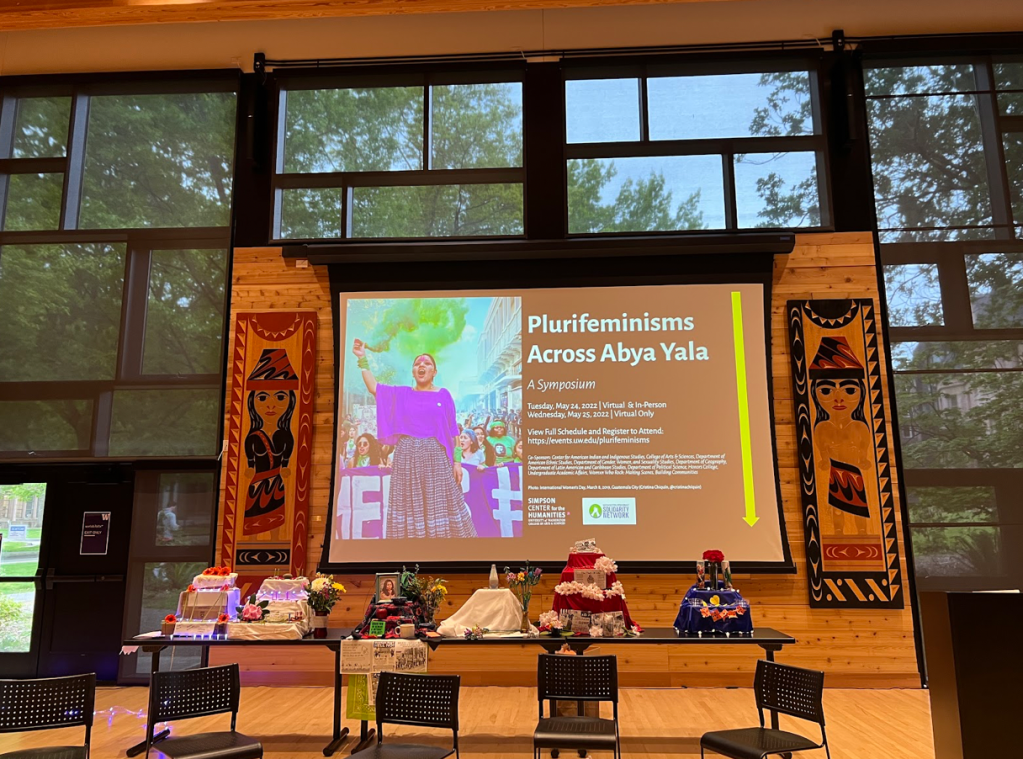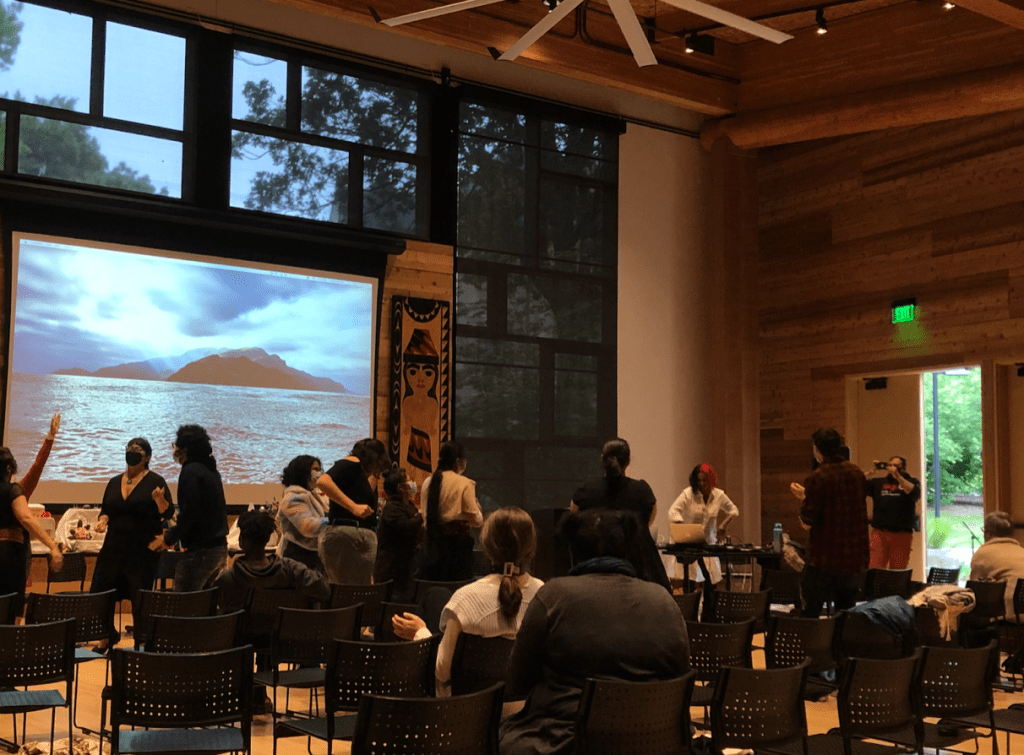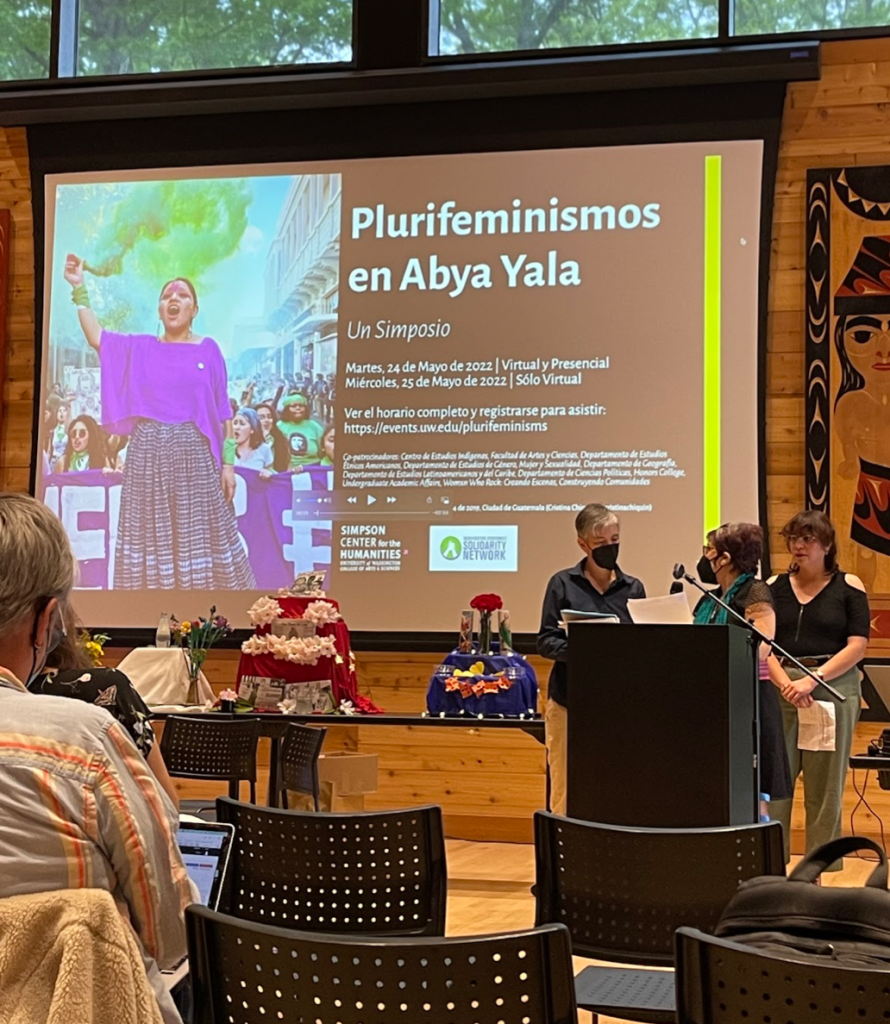
Meta data:
- Hope Flanigan
- Most of Group 5 in front of our completed altar: left to right, Claire Longcore, Hope Flanigan, Grace Romero, Vincent Wilson
- Plurifeminisms across Abiyala Symposium
- UW Intellectual House, Seattle, USA
- 5/24/2022
Categorization: Buen Vivir— this photo is indicative of Buen Vivir and Convivencia because it features our group members building community, having constructed an altar.

Meta data:
- Claire Longcore
- Top-down view of Group 5 altar
- Plurifeminisms across Abiyala Symposium
- UW Intellectual House, Seattle, USA
- 5/24/2022
Categorization: This image represents Plurifeminism because of its featuring of many diverse visual elements which all come together in a feminist art piece.

Meta data:
- Hope Flanigan
- Michelle Habell-Pallan, Cricket Keating, and Maylei Blackwell before the event
- Plurifeminisms across Abiyala Symposium
- UW Intellectual House, Seattle, USA
- 5/24/2022
Categorization: This image, featuring Michelle Habell-Pallan, Cricket Keating, and Maylei Blackwell, shows building communities, as this symposium wasn’t just about enjoying art, but being in relation with one another as in this picture.

Meta data:
- Claire Longcore
- Face-on view of Group 5 altar
- Plurifeminisms across Abiyala Symposium
- UW Intellectual House, Seattle, USA
- 5/24/2022
Categorization: This image is indicative of Making Scenes because of its featuring of current reproductive rights flyers. These demonstrate current and future organization and how praxis extends beyond the symposium space.

Meta data:
1. Claire Longcore
2. Black Mama soundchecking
3. Plurifeminisms across Abiyala Symposium
4. UW Intellectual House, Seattle, USA
5. 5/24/2022
Categorization: This image features Black Mama performing, and so represents Chicanxfuturism as she sings Afro and Indigenous inspired music, assisted by high musical technology to convey a message.

Meta data:
- Krista Cherry
- Hope Flanigan creating the Group 5 altar
- Plurifeminisms across Abiyala Symposium
- UW Intellectual House, Seattle, USA
- 5/24/2022
Categorization: This image shows making scenes because it shows the action of actually constructing an Ofrenda.
Explanation of why the photos were chosen:
We chose these six photos because we think they best represented the Convivencia conducted by the event. While building our ofrendas, we conversed and connected with other groups, sharing materials and feedback in construction and explaining the significance of our work. The aggregation of our hands, minds, and materials in both our ofrenda making and in the panelist presentations and performances tangibly solidified the social and experiential bonds formed in our collective efforts. In building and recognizing our power as a community, the visible distinctness of our individual efforts kept us conscious of the diversity among us, honoring our respective backgrounds and showing us the strength in finding affinity among difference. These photos very literally exemplify our course theme of making scenes, as they capture these significant moments of Convivencia and community building produced by this event.
Selected Interviews:
- Group 5: Grace Romero, Hope Flanigan, Krista Cherry, Claire Longcore, Vincent Wilson
- “Plurifeminisms Meaning”
- Wesley Carrasco
- 5/24/22
- Hope Flanigan
- Format: Word Doc
- Length of Interview: 1 min 33 secs
Hope’s Interview:
Wesley Carrasco – What does this Plurifeminisms across Abya Yala mean to you?
“I think for me it’s just trying to think about alternative futures that are encompassing of so many different and existing peoples that are striving towards the same thing. And so specifically in regards to feminism, it’s a collective understanding of how do we move away from patriarchy. How do we have a world that is encompassing of so many other worlds within it? Not just through the lens of the human perspective but also the worlds around us, the river, the land, the air, the fire.”
- Group 5: Grace Romero, Hope Flanigan, Krista Cherry, Claire Longcore, Vincent Wilson
- “Plurifeminisms Meaning #2”
- Eren Morales
- 5/24/22
- Vincent Wilson
- Format: Word Doc
- Length of Interview: 30 secs
Vincent’s Interview:
Eren Morales:
Q: What’s this event’s significance to you?
A: “Typically, growing up in a traditional Mexican household, feminism wasn’t really a topic of discussion, so really breaking down those borders and helping to open up this discussion and challenge traditional gender roles while also empowering women is so impactful.”

